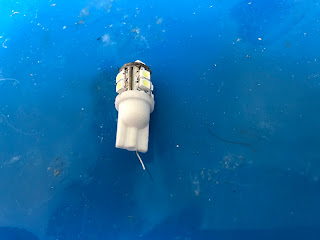Good afternoon folks and welcome to another
Flashback Friday this weeks blast from the past is Apple 2
The Apple 2 is an 8-bit home computer, one of the first highly successful mass-produced microcomputer products, designed primarily by Steve Wozniak (Steve Jobs oversaw the development of the Apple II's foam-molded plastic case and Rod Holt developed the switching power supply). It was introduced in 1977 at the West Coast Computer Faire by Jobs and was the first consumer product sold by Apple Computer. It is the first model in a series of computers which were produced until Apple IIe production ceased in November 1993. The Apple II marks Apple's first launch of a personal computer aimed at a consumer market – branded towards American households rather than businessmen or computer hobbyists.
Along with the PET 2001 and the TRS-80,
Byte magazine referred to these as the "1977 Trinity" of personal computing.The Apple II had the defining feature of being able to display color graphics, and this capability was the reason why the Apple logo was redesigned to have a spectrum of colors.
History
By 1976, Steve Jobs had convinced the product designer Jerry Manock (who had formerly worked at Hewlett Packard designing calculators) to create the "shell" for the Apple II – a smooth case inspired by kitchen appliances that would conceal the internal mechanics The earliest Apple IIs were assembled in Silicon Valley, and later in Texas; printed circuit boards were manufactured in Ireland and Singapore. The first computers went on sale on June 10, 1977[with a MOS Technology 6502 microprocessor running at 1.023 MHz, two game paddles (no longer bundled as of 1980 because they violated FCC regulations), 4 kB of RAM, an audio cassette interface for loading programs and storing data, and the Integer BASIC programming language built into the ROMs. The video controller displays 24 lines by 40 columns of monochrome, upper-case-only (the original character set matches ASCII characters 20h to 5Fh) text on the screen, with NTSC composite video output suitable for display on a TV monitor, or on a regular TV set by way of a separate RF modulator. The original retail price of the computer was $1,298 (with 4 kB of RAM) and $2,638 (with the maximum 48 kB of RAM). To reflect the computer's color graphics capability, the Apple logo on the casing has rainbow stripes,which remained a part of Apple's corporate logo until early 1998. Perhaps most significantly, the Apple II was a catalyst for personal computers across many industries; responsible for opening the doors to software marketed at consumers.
My experience
I have never used one of these but would love to get the chance
Thanks for taking the time to read this if you
liked what you've read then please check back tomorrow after 17.00bst
for another update thanks again. Dobby






















































